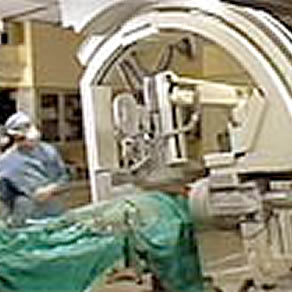During these procedures, the patient is given light sedation
for comfort, but remains awake in order to respond to various
instructions ("take a deep breath", "hold your breath", "cough",
etc.) from the interventional cardiologist who is part
operator, part diagnostician, part photographer.

